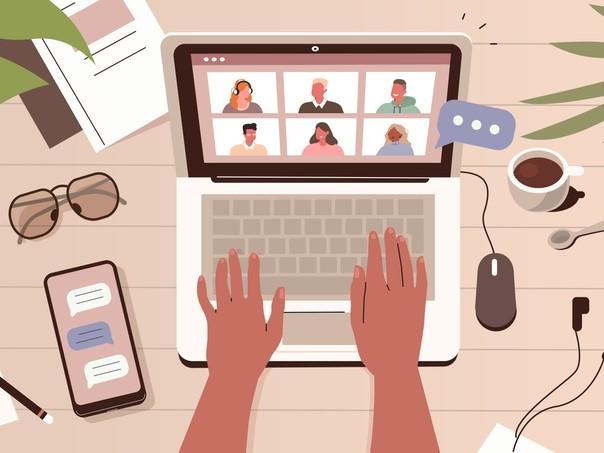While the pandemic hit our sector hard, for many there was a silver lining. Remote learning brought huge gains in accessibility – partly driven by the massive increase in recorded content such as lectures.
For deaf students who usually lip-read and listen in class, the acoustic and visual environment for some was better online. The lecturer’s face was visible, and usually the sound quality was good for pre-recorded lectures. However, accurate captions were much more difficult for universities to achieve, and across the board staff and students have reported that the standard of transcripts generated by automatic speech recognition (ASR) is poor.
But it’s not just deaf students who struggle without accurate captions. Traditional, listening-only approaches present difficulties for students with neurodiverse conditions – about one in five – particularly those with dyslexia, auditory processing disorder and attentional difficulties. Students studying in their second language also report finding transcripts hugely beneficial.
- Making online classes work for students with ADHD
- Bridging the digital divide: online courses with equity at their core
- New norms in higher education that can help disabled students long-term
More broadly, for technical courses with a high proportion of specialist vocabulary, accuracy is paramount. For medical or veterinary students, misinterpreting what the lecturer has said because of poor-quality recordings or transcripts could put lives at risk.
When new legislation crept quietly into force in 2018 requiring public-sector organisations to begin making their websites and mobile apps accessible to all, the impact on the higher education sector was minimal given the prevalence of face-to-face teaching at the time.
Fast-forward to summer term 2020, and the stark reality of remote learning induced by the pandemic had drastically changed the landscape. The 23 September 2020 deadline specified by the legislation was the date when all public-sector websites needed to be fully accessible. This included the requirement for all video and audio content produced by universities to include 99 per cent accurate transcripts or captioning (or both, for video). Automatic subtitling tools have proved not to be up to the task, but more concerningly the impact on staff has highlighted systemic inequalities.
Voice-recognition technologies typically do not perform well with accents that deviate from the “standard” speech they have been trained on. At the same time, the number of staff members who speak English as a second language and/or are likely to speak in a “non-standard” accent is high – in 2019-20, 31 per cent of UK HE academic staff were not UK citizens. Further, considering the regional and social variation in accents within the UK, it is inevitable that automatic transcriptions are not equally accurate for all staff members.
Of course, no academic would question the need for accessibility, but transcription has become a heavy burden. Perfect transcription can take up to three hours for every hour of recorded content, and lecturers cannot carry this extra work, especially with the volume of recorded content now being produced.
In some institutions, such as the University of Edinburgh, subtitling units are in place to provide accurate transcripts for deaf students; even then, however, there can often be a time delay on receiving accurate transcripts, which can impact students’ ability to keep up with the course. Better software with fast editing functionality is essential, but we also need an honest, open dialogue in universities and colleges.
The accessibility legislation was designed pre-Covid, in a world with much less video content, and this may help to explain findings that a majority of European institutions are struggling to comply with the legislation. It’s an interesting thought experiment to consider whether the legislation would still have been published in its current form if we had known what was coming. So, what can we do to work towards meeting the requirements of this legislation and ensuring that students have timely access to transcripts while not adding to staff workloads?
1. Maximise the acoustic
Staff should be provided with access to high-quality recording equipment. When recording, use a good-quality microphone and place it near your mouth, but not so close that it brushes against clothing. Record away from windows or draw the curtains for sound absorption. Place rugs, beanbags or other soft furnishings in the room to reduce reverberation. And don’t forget to protect against interruptions.
2. Slower and shorter
Avoid rushing your speech, and use sensible transition speeds between slides to allow short processing breaks; this will help dyslexic students and those with auditory processing difficulties, as well as increasing automatic speech recognition accuracy. Think of each session as 10- to 15-minute segments for an audience sitting at their computer.
3. Enable easy editing
Use software that allows fast automatic transcription of video plus editing access for multiple users; this means that lecturers can get help with transcript editing from (appropriately compensated!) graduate teaching assistants, PhD students and other colleagues. This has encouraged staff in the School of Psychology and Neuroscience at the University of Glasgow to use our video-learning and live-streaming platform Echo360 alongside other systems to make recorded content more accessible with transcripts.
4. Be transparent
As a sector, we should communicate with students clearly about when and why transcripts may not always be 100 per cent accurate, including highlighting the systemic biases and additional workload that can be placed on particular groups of staff. Guidance for staff should be honest about the time required to produce 100 per cent accurate transcripts and provide clear, concrete recommendations for how long they should spend on editing transcripts. While universities may employ a flexible approach to accuracy, it should still be acknowledged that staff members with “non-standard” accents will be disproportionately left with the choice of providing an inaccurate transcript or spending non-allocated time on editing their transcripts.
5. Engage on workload
Leaders must engage transparently on workload. We can’t keep up a system where lecturers have the choice between adding to already breaking workloads and allowing all students to meaningfully engage with their education. It’s time to be honest about the impact on workload and fund a solution.
Emily Nordmann is senior lecturer in the School of Psychology and Neuroscience, University of Glasgow.
Wilhelmiina Toivo is a lecturer in the School of Psychology and Neuroscience, University of Glasgow.
Rachel O’Neill is a senior lecturer in deaf education at the University of Edinburgh.
If you would like advice and insight from academics and university staff delivered direct to your inbox each week, sign up for the Campus newsletter.




comment1
(No subject)